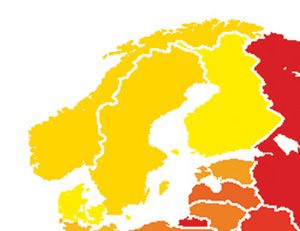Recently, there have been three cases of alleged corruption in Finland that have challenged the consensus on our country’s low corruption rates. This has shaken citizens’ understanding on what is acceptable and what is not, and contributed to our understanding of what might be called “structural corruption,” the non-transparent ways of doing business in Finland or put more directly, cronyism.
The first case centred on personal business dealings between two businessmen, the CEO of Finnair, which is 58.8 per cent state-owned and the CEO of an insurance company who also happened to be the chairman of Finnair. No charges were filed but there was an investigation into the cosy relationship whereby Mika Vehviläinen CEO of Finnair sold his apartment for about 1.8 million euros to the insurance company run by Finnair’s chair at a time when the insurance company also founded a cargo airline. Vehviläinen continued to live in the apartment after it was sold with Finnair paying his 6,800 Euro rent, which brought him considerable tax benefits.
The Deputy Prosecutor General Jorma Kalske decided not to press corruption charges because the investigation found no connection between Vehviläinen’s housing arrangements and the founding of the cargo airline and that no law had been broken. This announcement sparked a heated debate about public and private interests. Even Vehviläinen has said that “it is not enough to follow legislation, but one must also consider ethical viewpoints and how things may look.”
In another case of potential cronyism the police have started an investigation into public procurement in Vantaa, the fourth largest city in Finland in terms of population, located next to Helsinki. So far, no charges have been brought, but the police have found a chain of suspicious connections between local politicians and construction businesses dating back to the beginning of the 1990s, including the fact that the ex-mayor of Vantaa has paid very low rent to a company closely connected with city planning inVantaa.
A third case arises from possible misuse of tax moneys for political purposes. Several foundations often closely linked with political parties are engaged in building state-subsidised public housing. The current case concerns Nuorisosäätiö, a foundation with very close links to Finland’s third biggest party, the Center Party.
The prosecutor alleges that board members of the foundation provided hidden financial aid to the Center Party. In the media this case is discussed as an example of structural corruption. This concept was even referred to by the foundation’s former representative in his testimony and further discussed in an editorial of Helsingin Sanomat, the main national newspaper in Finland.
In all, the attitudes towards decision-making are changing. Today, the need for transparency is taken much more seriously than earlier. Even practices that previously have been presented as strengths of the Finnish decision-making system, for example, the ability for parties at the local and national level to work together to build a consensus platform, are now under criticism.
From Transparency Finland’s viewpoint, this is a very positive development. Finally we find that the discussion on transparency and corruption is taken seriously and put in context of our national structures and traditions.
Carousel image: Flickr/Creative commons: Chiva Congelado
















 Connect with us on Facebook
Connect with us on Facebook Follow us on Twitter
Follow us on Twitter